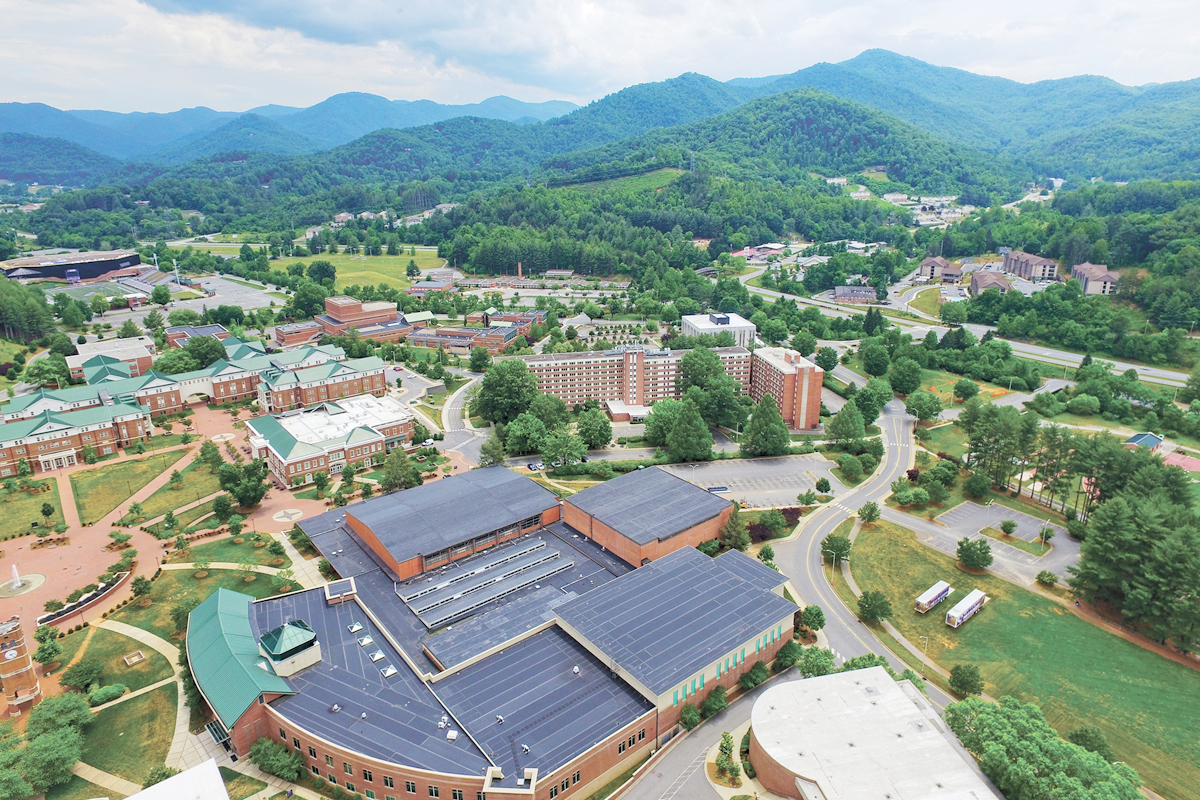State budget delivers wins for WCU
 WCU currently enrolls 11,628 students. Allen Newland/A Shot Above photo
WCU currently enrolls 11,628 students. Allen Newland/A Shot Above photo
The newly adopted state budget is good news for Western Carolina University, according to Vice Chancellor for Administration and Finance Mike Byers.
“The legislature and taxpayers were very good to WCU this year,” Byers said. “We received virtually everything we asked for, so many thanks to the legislature for the investment they’re making in Western North Carolina through WCU.”
Top of WCU’s legislative agenda for the last term was funding for a beefed-up engineering program and, eventually, a new engineering building. The legislature granted that request. WCU will receive a recurring $3.5 million for its engineering program, which will allow it to hire new faculty. A one-time appropriation of $2 million will be used to start planning efforts for a new, $95 million engineering building. The planning process is expected to take 18-24 months, with a similar timeframe required for construction, Byers said. Assuming future funding falls into place as needed, the new building could open in three to four years.
Improved compensation for faculty and staff has also been a top request to legislators, and like all state employees, WCU’s workforce will receive a 7% raise over two years — 4% for this year retroactive to July 1 and 3% for the fiscal year starting July 1, 2024.
WCU received a larger overall budget thanks to the University of North Carolina System’s newly adopted funding model, which recommends funding based partially on the school’s past performance.
Related Items

Students enjoy some sunny weather on the WCU campus. WCU photo
WCU came out ahead compared to the old model but is limited as to how it can spend the extra money from its high performance over the past year. That’s because the legislature funded the performance portion of university funding with non-recurring funds, rather than with recurring funds as requested by the UNC System.
“Since we performed well, we’ll have some additional funds that we can spend on necessary, non-recurring stuff,” Byers said. “We can buy equipment and things that we need that you only have to pay for once. But we couldn’t hire additional faculty, or we couldn’t give raises with it, because that’s a recurring cost.”
The model replaces a decades-old funding formula that relied on the change in enrolled credit hours, with various multipliers related to the cost of delivering those credit hours, to arrive at a funding recommendation to present to legislators. The new model looks at completed hours, not enrolled hours, and weights recommended funding based on the school’s performance in various areas.
At WCU, those performance metrics are four-year graduation rate, undergrad degrees conferred compared to total student population, transfer student debt, first-time freshman debt at graduation, education and related expenses per degree and, finally, the number of health sciences and STEM degrees awarded. Each school is given a baseline goal and a stretch goal for these metrics — meeting the stretch goal unlocks additional performance funding, even if enrollment doesn’t grow at all.
This is the first year that funding recommendations have been determined solely by the new model. The university met all its baseline goals and five of six stretch goals. The only stretch goal it did not meet was the four-year graduation rate — its actual rate of 46.7% was above the baseline goal of 46.5% but below the stretch goal of 52.8%.
Thinking about the four-year rate is “a bit of a shift” for most universities, Byers said, because in the past they’ve been judged based on the six-year rate — the four-year timeframe doesn’t leave room for a semester off to earn money or a change of major midstream.
“It’s still a fair measure,” Byers said. “You’re never going to get 100% of them to graduate in four, but the more you get the better, because it means less debt and less expense.”
While WCU came out ahead under the new model, Byers noted that in addition to rewarding good performance with increased funding, the model punishes poor performance with decreased funding.
“I can see where someone could have a bad year and it could be hard to get yourself back out,” he said.









